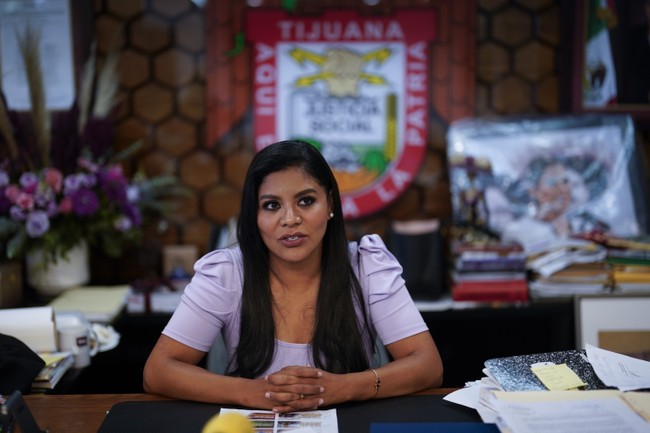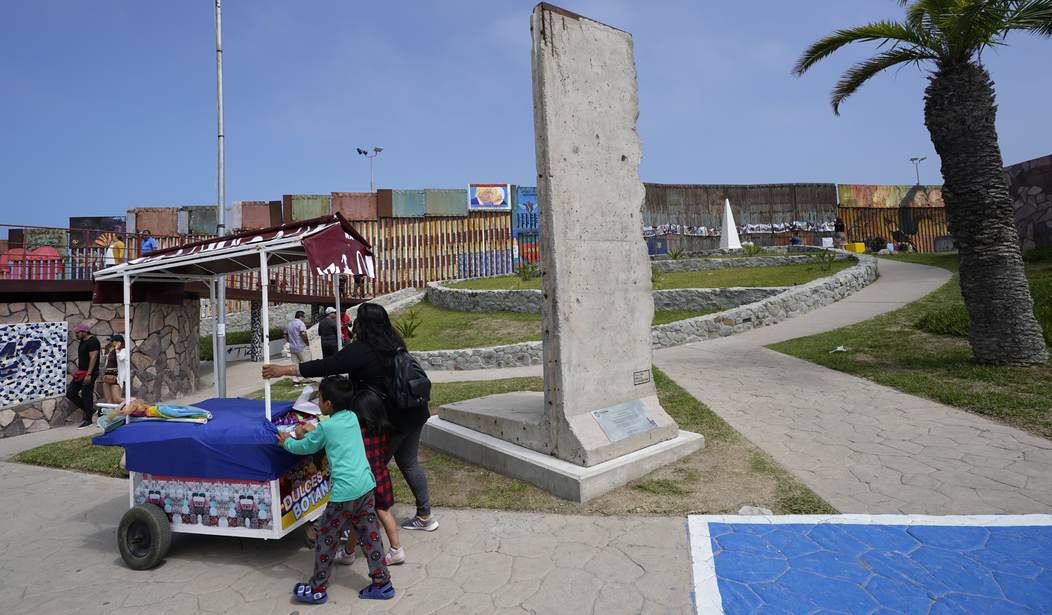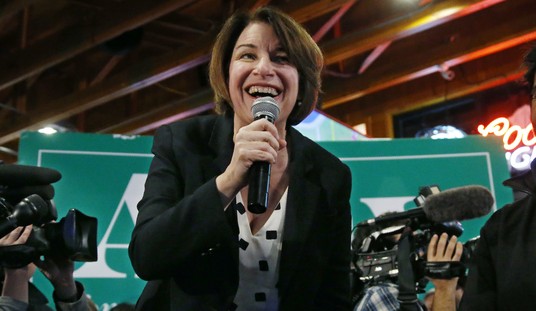During a ceremony on August 18 the Mexican government dedicated a piece of the Berlin Wall at Friendship Park in Tijuana, which sits at the border with San Diego. At its base is a plaque with an inscription penned by Tijuana Mayor Montserrat Caballero:
"May this be a lesson to build a society that knocks down walls and builds bridges of solidarity and understanding, always seeking the common good, social justice, freedom and brotherhood."
At the ceremony, Caballero rhetorically asked why the wall would be placed in Tijuana, then answered with her own rhetoric.
"Why in Tijuana? How many families have shed blood, labor and their lives to get past the wall? The social and political conflict is different than the Berlin Wall, but it’s a wall at the end of the day. And a wall is always a sphinx that divides and bloodies nations."
That's rich. Perhaps Caballero needs a few history lessons. Without the United States, and specifically without the courage of President Ronald Reagan, that wall might still be standing in Berlin, separating families and holding people prisoner. Not to mention that Mexico wasn't exactly standing firmly against the people who erected that wall and didn't help liberate the people who, for decades, couldn't escape.
But back to this part of the Berlin Wall at issue. In reality, the slab was placed in Tijuana because it needed a home after it was brought to the United States as part of a failed stunt by lefty activists, who tried to deliver it to then-President Donald Trump at the White House in 2019.
The gift was rejected by the White House, according to reports. (One of Trump’s main promises while in office was to build a wall on the southern border, and during his administration he initiated a project to replace miles of the border wall with Mexico with a higher one.)
The Berlin Wall piece subsequently toured different parts of the country, including the San Diego border in November 2019.
On Sunday the piece of the Berlin Wall was officially donated to its permanent home in Tijuana. It was gifted by producer and La Jolla native Marcos Cline-Marquez, who worked with the German nonprofit Die Offene Gesellschaft to bring the wall fragment to the United States in 2019.
Cline-Marquez further told PBS:
“We didn’t want the wall to be behind a specific barrier,” he said. “Whether that barrier be a physical one or not a physical one, like costs involved to be able to see it.”
Cline-Marquez said there are also barriers in the U.S. immigration system, such as limits on legal migration that prevent temporary workers from entering the United States. So placing the Berlin Wall near the U.S.-Mexico border is meant to be a sign.
“A sign telling the people who are looking for a better life, who have struggled to be here, that there are groups of people who are paying attention to this and talking about getting rid of barriers,” he said.
It's slightly odd that elected officials in Mexico would be trumpeting this message, which essentially says, "Hey, this place isn't so great. If you want a better life, keep going north," and then slam the government in that country north of them for wanting to ensure that the people coming into the country are following the laws relating to how to enter the country.
Let's not forget that Tijuana is bearing a lot of the brunt of Biden's border crisis, but the finger of blame should be pointed at the Mexican government and not the United States since it's the Mexican government's inaction (whether from incompetence or corruption, or some combination thereof) that has allowed the cartels to completely control its border and sell "safe passage" to the United States desperate people, and terrorists, around the globe. The Mexican government selectively controls its own borders and selectively enforces its immigration policies, at the behest of the cartels. That's not to say that it's entirely voluntary on the part of the Mexican government at this point. They've been allegedly waging a war against cartels for more than a decade, and it doesn't seem to be a battle they can actually win. But as a result of this instability and the Remain in Mexico policy, Tijuana is more dangerous than it's ever been.
In May, El Pais reported:
At least one homicide is registered in Tijuana every single day of the year. Last year, there were 2,753 violent deaths in total. A war grips the border city, where the main businesses are arms, drugs and prostitution — the most lucrative sectors in the world. University students in Tijuana are used to hearing gunshots from their classrooms, whenever the cartels decide to impose their rule and break down the public order.
Speaking of walls, unlike ordinary Tijuana residents, Caballero lives behind quite a few of them.

From the same El Pais article:
On May 17, one of her bodyguards was attacked when he was driving the official vehicle — he was alone and he was lucky. Threats have been phoned in and pasted on billboards in recent weeks, and someone recently tried to enter her apartment, saying that he had permission. After so many incidents, the National Guard suggested that the mayor change her address. This past weekend, the final touches were made to a residence within the barracks of the 28th Infantry Battalion.
A private elevator takes her up and down from the parking lot to her office where, before entering, a sign warns that firearms are prohibited. She is always surrounded by bodyguards, who have multiplied in recent days. The armor of her official van is so heavy that it takes a lot of strength just to close and open the door. Two other vans of the same size protect her when she makes a trip. Her entourage is also accompanied by two trucks from the National Guard, filled with uniformed men carrying machine guns, pointing them in all directions. It would be quite a spectacle to go for a walk. Dozens of agents take turns protecting her. “I can’t even open the window of my truck,” she sighs.
That's a terrible way to live, and if there was no wall between Tijuana and San Diego, people living in San Diego would have a lot of the same fears, as they did before the first sections of border wall were erected there in the 1990s. No thank you.















Join the conversation as a VIP Member